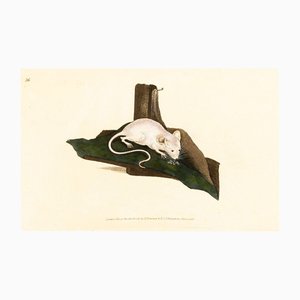Albrecht Dürer 16th Century Old Master Engraving The Sudarium Of Saint Veronica Good condition overall, framed and mounted under protective glass. Dated and signed in the plate with the artist’s monogram on a tablet lower center. A clean & clear 16th century Meder “c” (of d) impression, printed after the appearance of the scratch in the shadow under the arm of the angel on the right. Catalog: Bartsch 25; Dodgson 71; Panofsky 132; Meder 26b; Hollstein 26; Strauss 69; Schoch/Mende/Scherbaum 68. Literature regarding this artwork: Giulia Bartrum, Albrecht Dürer and his Legacy: The Graphic Work of a Renaissance Artist, The Britsh Museum Press, 2002, no. 4, p. 82 (ill.) Collections in which impressions of this state of this engraving can be found: Museum of Fine Arts (Department of Prints and Drawings), Boston; Staatliche Graphische Sammlung, Munich. Few Christian legends are better known and more valued than that of St. Veronica, who compassionately wiped the face of Jesus when He fell beneath the load of His cross on the way to Calvary. Nor is that to be wondered at, for it is a most touching story that appeals at once to the heart of every Christian and, in the version which makes her the wife of a Roman officer, is a moving example of contempt of public opinion and human respect. But the legend, though ancient, has only a vague tradition to support it, and the identifications of the woman to whom the name Veronica has been given are several and various. Dürer had worked intensively during the years up to 1513 on his series of Passion woodcuts, but the natural association of this engraving with the prints of the Engraved Passion, to which it would form an appropriate tail-piece, is precluded by the unusual horizontal format. Dürer himself viewed it as a single sheet print, since he refers to it as Veronicum in his diary of the journey to the Netherlands. On two occasions in August of 1520 he gave impressions away as presents. However, the most striking feature of the print, as subsequent artists such as Dürer’s follower Sebald Beham noticed and many commentators have indicated, is the similarity of the frontal gaze of Christ to Dürer’s self-portrait of 1500 in Munich. As the scholar Panofsky noted “the features of the Savior bear an unmistakable resemblance to Dürer’s own.” It is one of numerous occasions that Dürer associated the idea of his image with that of Christ. Giorgio Vasari’s of the self-portrait painted on cambric, which the artist sent to Raphael as a gift in about 1515, bears a curious resemblance to the idea of St. Veronica’s sudarium..
Albrecht Dürer Siglo XVI Grabado antiguo El Sudario de Santa Verónica Buen estado en general, enmarcado y montado bajo cristal protector. Fechado y firmado en la plancha con el monograma del artista en una tablilla en la parte inferior central. Una limpia y clara impresión Meder "c" (de d) del siglo XVI, impresa después de la aparición del arañazo en la sombra bajo el brazo del ángel de la derecha. Catálogo: Bartsch 25; Dodgson 71; Panofsky 132; Meder 26b; Hollstein 26; Strauss 69; Schoch/Mende/Scherbaum 68. Literatura relativa a esta obra: Giulia Bartrum, Alberto Durero y su legado: The Graphic Work of a Renaissance Artist, The Britsh Museum Press, 2002, no. 4, p. 82 (ill.) Colecciones en las que se pueden encontrar impresiones de este estado de este grabado: Museum of Fine Arts (Department of Prints and Drawings), Boston; Staatliche Graphische Sammlung, Múnich. Pocas leyendas cristianas son más conocidas y valoradas que la de Santa Verónica, que limpió compasivamente el rostro de Jesús cuando cayó bajo la carga de su cruz camino del Calvario. No es de extrañar, pues se trata de una historia conmovedora que llega al corazón de todo cristiano y, en la versión que la convierte en la esposa de un oficial romano, es un ejemplo conmovedor de desprecio a la opinión pública y respeto humano. Pero la leyenda, aunque antigua, sólo se apoya en una vaga tradición, y las identificaciones de la mujer a la que se ha dado el nombre de Verónica son varias y variadas. Durero había trabajado intensamente hasta 1513 en su serie de xilografías de la Pasión, pero la asociación natural de este grabado con las estampas de la Pasión grabada, a las que constituiría un apropiado colofón, queda excluida por el inusual formato horizontal. El propio Durero lo consideraba una estampa de una sola hoja, ya que se refiere a él como Veronicum en su diario del viaje a los Países Bajos. En dos ocasiones, en agosto de 1520, regaló impresiones. Sin embargo, la característica más llamativa de la estampa, como observaron artistas posteriores como Sebald Beham, seguidor de Durero, y han indicado muchos comentaristas, es la similitud de la mirada frontal de Cristo con el autorretrato de Durero de 1500 en Múnich. Como señaló el erudito Panofsky, "los rasgos del Salvador guardan un parecido inconfundible con los del propio Durero" Es una de las numerosas ocasiones en que Durero asoció la idea de su imagen con la de Cristo. El autorretrato pintado sobre batista que el artista envió a Rafael como regalo hacia 1515, según Giorgio Vasari, guarda un curioso parecido con la idea del sudario de Santa Verónica...



















Contacta con nosotros
Haz una oferta
¡Hemos notado que eres nuevo en Pamono!
Por favor, acepta los Términos y condiciones y nuestra Política de privacidad
Contacta con nosotros
Haz una oferta
¡Ya casi está!
Para seguir la conversación en la plataforma, por favor completa el registro. Para proceder con tu oferta en la plataforma, por favor completa el registro.Exitoso
Gracias por tu consulta, alguien de nuestro equipo se pondrá en contacto contigo en breve.
Si eres profesional del diseño, por favor solicita aquí los beneficios del Programa comercial de Pamono